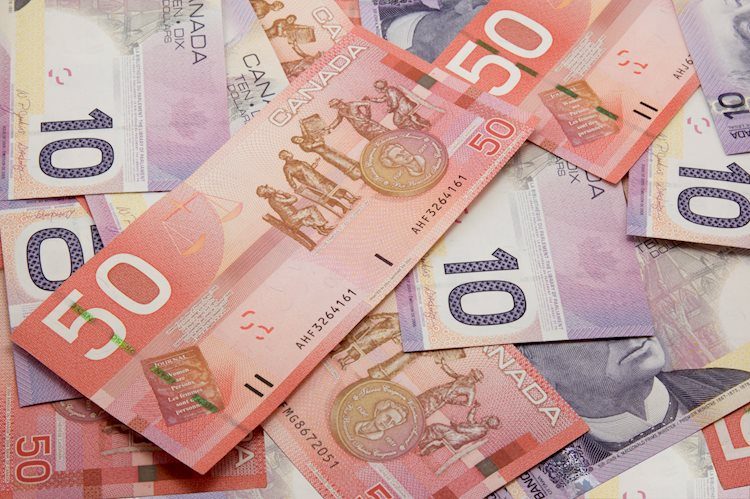- USD/CAD loses momentum around 1.3430 in Wednesday’s early Asian session.
- The CB’s Consumer Confidence Index came in at 98.7 in September vs. 105.6 prior.
- BoC’s Macklem said the timing and pace of rate cuts will be dependent on data.
The USD/CAD pair remains under selling pressure near 1.3430 during the early Asian session on Wednesday. The Greenback edges lower as traders raise their bets on an additional 50 basis points (bps) jumbo rate cut from the US Federal Reserve (Fed) in November. Fed Governor Adriana Kugler is set to speak later on Wednesday.
The US consumer confidence unexpectedly fell by the most in three years in September amid concerns about the softening labor market and slow economic growth. The Consumer Confidence Index fell to 98.7 in September from a revised 105.6 in August, the biggest drop since August 2021, the Conference Board reported on Tuesday.
The downbeat report has triggered expectations of further rate reductions from the Fed in November, which continue to underline the US Dollar (USD) broadly. Traders are now pricing in nearly 56% odds of a second 50 bps rate cut in the November meeting, while the chance of 25 bps stands at 44%, according to the CME FedWatch Tool.
On the Loonie front, Bank of Canada (BoC) Governor Tiff Macklem said on Tuesday that the central bank will continue to carefully watch consumer conditions in Canada, emphasizing that the timing and pace of BoC’s rate cuts will be dependent on data. “The timing and pace will be determined by incoming data and our assessment of what those data mean for future inflation,” noted Macklem. The BoC’s next interest rate decision is scheduled for October 23, and the money markets see over 58% of 50 bps rate cuts. Another 25 bps cut is priced in for its last meeting of the year in December.
Canadian Dollar FAQs
The key factors driving the Canadian Dollar (CAD) are the level of interest rates set by the Bank of Canada (BoC), the price of Oil, Canada’s largest export, the health of its economy, inflation and the Trade Balance, which is the difference between the value of Canada’s exports versus its imports. Other factors include market sentiment – whether investors are taking on more risky assets (risk-on) or seeking safe-havens (risk-off) – with risk-on being CAD-positive. As its largest trading partner, the health of the US economy is also a key factor influencing the Canadian Dollar.
The Bank of Canada (BoC) has a significant influence on the Canadian Dollar by setting the level of interest rates that banks can lend to one another. This influences the level of interest rates for everyone. The main goal of the BoC is to maintain inflation at 1-3% by adjusting interest rates up or down. Relatively higher interest rates tend to be positive for the CAD. The Bank of Canada can also use quantitative easing and tightening to influence credit conditions, with the former CAD-negative and the latter CAD-positive.
The price of Oil is a key factor impacting the value of the Canadian Dollar. Petroleum is Canada’s biggest export, so Oil price tends to have an immediate impact on the CAD value. Generally, if Oil price rises CAD also goes up, as aggregate demand for the currency increases. The opposite is the case if the price of Oil falls. Higher Oil prices also tend to result in a greater likelihood of a positive Trade Balance, which is also supportive of the CAD.
While inflation had always traditionally been thought of as a negative factor for a currency since it lowers the value of money, the opposite has actually been the case in modern times with the relaxation of cross-border capital controls. Higher inflation tends to lead central banks to put up interest rates which attracts more capital inflows from global investors seeking a lucrative place to keep their money. This increases demand for the local currency, which in Canada’s case is the Canadian Dollar.
Macroeconomic data releases gauge the health of the economy and can have an impact on the Canadian Dollar. Indicators such as GDP, Manufacturing and Services PMIs, employment, and consumer sentiment surveys can all influence the direction of the CAD. A strong economy is good for the Canadian Dollar. Not only does it attract more foreign investment but it may encourage the Bank of Canada to put up interest rates, leading to a stronger currency. If economic data is weak, however, the CAD is likely to fall.
Read the full article here

